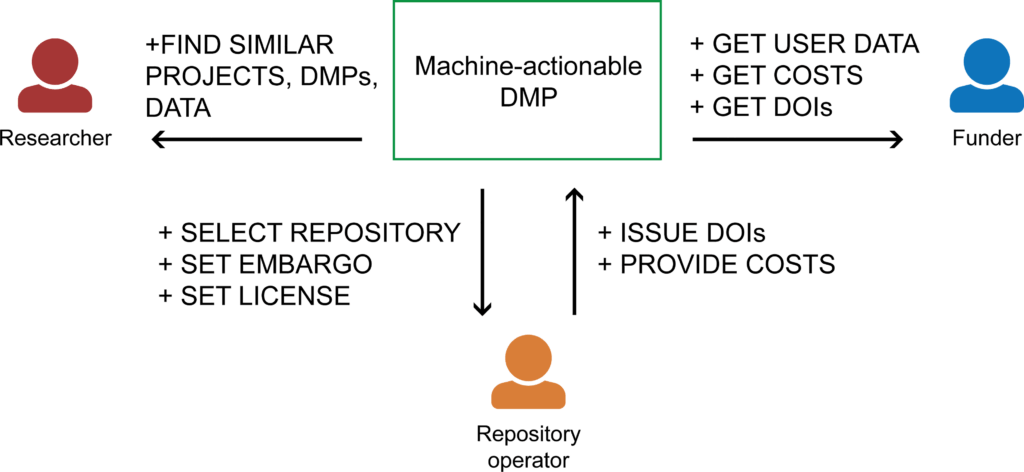Over the past few years, UC3 has been investing time and energy into support machine-actionable data management plans (maDMPs). This effort is shared among many DMP services providers and other organizations, working together to build a robust ecosystem for maDMPs. The Salzberg Manifesto outlined the commitments and goals of those in the space working towards this shared effort, as the true value of maDMPs will be unlocked when services across the research ecosystem support them.
A machine-actionable Data Management Plan (maDMP) is a DMP that is structured so that computer systems can automatically read, understand, and act on the information within it.
A traditional DMP is usually a static PDF or Word document. A person has to read it to understand the plan. A machine-actionable DMP is more like an online form or a digital calendar invite; the information is in predictable fields and standardized formats that software can easily pull from and use. It can also connect more easily to a networked hub of information within digital research infrastructure. These connections can make it easier for researchers to complete DMPs, for example by pulling in pre-existing information from other sources, as well as make the DMP more useful over time, for example by pushing updates from the DMP to external research systems like electronic lab notebooks.

Our rebuild of the DMP Tool is guided by this goal of a full machine-actionable DMP. While we already have some machine-actionability on the site through our API, there are limitations that block the full sharing of information between services, such as having the narrative portion of a DMP only sent as a PDF instead of structured JSON format. The Machine-Actionable Plans Pilot Project explored potential integrations people could build with the current API, and offered us valuable feedback on what to improve.
The API that releases with the updated DMP Tool will be much more fully featured, allowing other services such as electronic lab notebooks, university software, and repositories, to conduct almost any transfer of information through the API that they could do on the website. Our goal is to make it easy to build impactful integrations with DMPs so people can update the DMP over time and export the information from the DMP to other services. We’re participating in a working group to develop a common standard for DMP APIs, so that services who want to build an integration with DMP tools more broadly can develop code that works with many sites with less effort.

